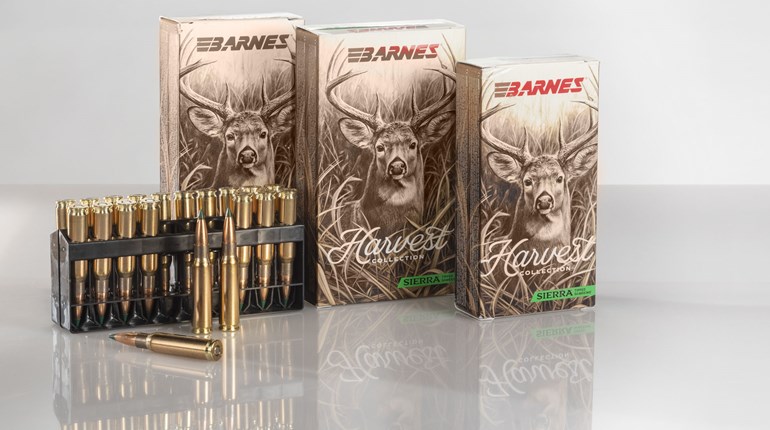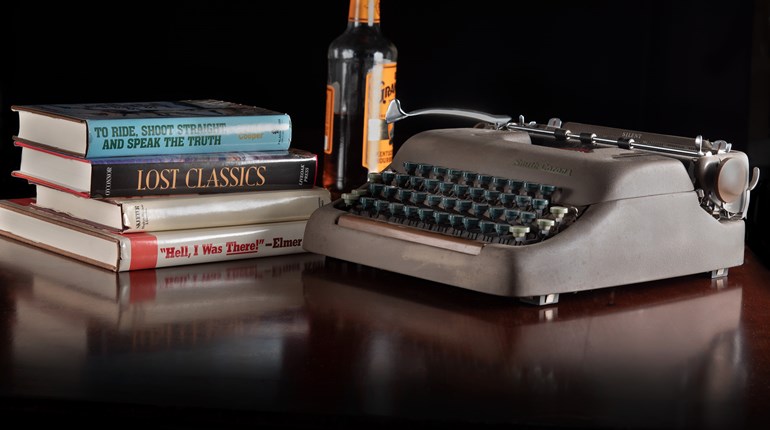
If there is any doubt of life after death, we need only to look at the 10 mm cartridge.
It had a moment in the sun after the FBI chose it as a replacement for the (at the time) failed 9 mm, but many of the Bureau’s personnel couldn’t handle the recoil, so it soon rejected the cartridge. That resulted in 10 mm living in the shadow of obsolescence for decades.
Then, a few years back, the cartridge underwent a “rediscovery” with outdoorsy types, and it has risen to popularity again. Many are now using a handgun for hunting and for defensive carry in the wilderness.
At the moment, the issue is feeding the beast. Ammo for sale has become as elusive as the truth in the mainstream media. When you can find it, the prices are outrageous. I have seen factory ammo online for as much as $4 per round. Handloading is the only real answer—that is, if you had the foresight to stock up on components or have the street smarts to locate some.
I wanted to target three different handloads to address the range of applications for this cartridge. One for practice and informal competition, a second general load for hunting and defense and finally a specialized load for wilderness-protection use and for specific hunting applications. Of course, I had to work around all the issues of component shortages. Gunwriters are struggling through this mess right there with the rest of you. In the end, though, I have three loads that work beautifully.
My cases are from Starline Brass. I have used that brand for a huge number of reloading projects over the years and have never been disappointed. The primers are Federal Large Pistol. I seated them with a hand-held RCBS priming tool. This allows precise seating of the primers. This is very important in any defensive or hunting ammo. There is a dynamic range of powders that work well in the 10 mm. This time I had to work with what was in my shop, since gun stores are now a kingdom of empty shelves.
I have one of the new RCBS Match Master electronic powder dispensers on my bench. It’s amazing for loading rifle ammunition. Normally, any electronic dispenser is too slow for high-volume handgun loading, but this machine kept ahead of me. By the time I had seated the bullet and picked up a fresh case, the powder charge was waiting for me.
Due to the component shortage, I was not able to shoot the NRA protocol of five, five-shot groups for accuracy, but I know both guns I used to test these loads to be accurate and have done the protocol with them with other ammo in the past. The groups I did shoot were well within the accuracy range I expected, which is about 1.5 inches at 25 yards for five shots.

Load Number 1
Practice and Plinking Ammo
Practice is very important. The more you shoot a gun, the better you learn its subtleties. The more familiar you are with the gun, the better you will perform when it becomes important. Whether for defense or hunting, knowing your gun and shooting it well has a big influence on the outcome. So, practice ammo, by default, is very important. All the hoarded ammo in the world won’t help you if you can’t hit the target when bad times arrive. Handgun skills erode fast, so I keep a 10 mm in rotation for my Tuesday night club shoots and my own practice sessions.
The key here is cost, and the bullet is the main focus. Full-metal-jacket bullets have traditionally filled this need, although Hornady’s HAP bullets are a good bargain, too. Don’t rule out plated bullets or even cast projectiles. This is the volume leg of the venture and other than availability, cost is the controlling factor. If they run in the gun, load them up. I was able to acquire a few hundred Hornady 180-grain FMJ bullets and based this load on that bullet.
I load these to starting-load pressures. This is to reduce wear and tear on the gun and shooter. I want a load that I can bring to my club’s pistol shoots and run through 150 rounds without my hands/wrists rebelling. A side benefit is that this lighter load is a lot less abusive to the handgun. The 10 mm is arguably a more powerful round than the 1911 was originally designed to use. Even with the modern improvements, full-power ammunition is hard on the gun. Doing much of my volume shooting with reduced loads is kinder and gentler to me and the pistol.
I started out researching powders with an idea to use one that fills the case with a light load. There is a multitude of pistol and shotgun powders that will work with the 10 mm cartridge and reduced-velocity loads. Then, I spent a depressing few minutes looking at my inventory. In the end, I used what I had in stock. CFE Pistol could probably work well with all three of these loads, as it’s very versatile, but my supply was limited and, besides, what’s a reloading article without a little experimentation. I chose Winchester 231 because it fit the application well and I had a few pounds of it on hand.
Kimber KHX Custom OI, 5-inch barrel
Bullet: Hornady 180-grain FMJ
Case: Starline
Primer: Federal LP
Powder: WW 231
Charge weight: 5.2
COAL: 1.260
Velocity: 918
Energy: 337
Charge weight measured in grains. COAL (cartridge overall length) measured in inches. Velocity measured in fps with a LabRadar chronograph. Temperature: 85 degrees Fahrenheit. Energy measured in ft.-lbs.
Velocity from Remington R1 with a 6-inch barrel: 924 fps

Load Number 2
Generalized Ammo
This recipe is for general use, including most defense and hunting applications. It’s a 180-grain, expanding bullet driven to a velocity at or near the top for this cartridge.
Remember, the 10 mm is not a super-magnum. This cartridge was developed for defensive purposes, not for hunting. The bullets and powders are not like those used in the big hunting revolvers. The 10 mm power level is near that of the .357 Mag., which puts it on the lower end of the big-game, handgun-hunting spectrum. But, if you match the game, it works pretty well. Appropriate game is the deer-size class, including feral hogs, javelina and antelope. Sorry, but I have heard of too many 10 mm failures on black bears, both for self-defense and hunting, to recommend it for that use.
This is also a great load to carry for defense in wilderness areas without large bears. For mountain lions and smaller predators, it’s a very good choice. It would also be a fine defensive load against two-legged predators. It’s not like current conditions make finding factory ammo easy, so I think handloads could be more easily justified in case you’re worried about using handloads for defense. Just be aware of overpenetration.
I prefer a 180-grain bullet to give a good balance of power and penetration. There are a lot of good bullets on the market from most of the ammo makers, but I gravitated to the Hornady 180-grain XTP for two reasons: One, I have liked the XTP ever since I swatted a good black bear (not with a 10 mm) with that bullet the year Hornady introduced them. (Has it really been 31 years?) I am told it’s also great for dissuading aggressive bad guys. Secondly, and probably most relevant, I found three boxes of them buried on a shelf.
As fall arrives and I start to carry the gun afield, I’ll switch to this load exclusively, including for shooting practice and club matches (assuming I can get more bullets by then). That’s one reason I picked the Copper Fouling Eraser Pistol powder, which does help reduce fouling and allows more shooting between cleaning sessions.
Kimber KHX Custom OI, 5-inch barrel
Bullet: Hornady 180-grain XTP
Case: Starline
Primer: Federal LP
Powder: CFE Pistol
Charge weight: 7.5
COAL: 1.260
Velocity: 1,152
Energy: 531
Charge weight measured in grains. COAL (cartridge overall length) measured in inches. Velocity measured in fps with a LabRadar chronograph. Temperature: 85 degrees Fahrenheit. Energy measured in ft.-lbs.
Velocity from Remington R1 with a 6-inch barrel: 1,169 fps

Load Number 3
Bone Busters
The internet can turn a foolish concept into accepted reality, and there are a lot of believers who think the 10 mm is a shut-off switch for aggressive bears. The truth is, this is not what the 10 mm was ever intended to become. But, if you insist, this load brings out the best in the cartridge.
My mantra for the minimum in a pistol used for defense against bears is 4-3-1: At least .40 caliber, at least 300 grains of bullet weight and at least 1,000 fps muzzle velocity. This cartridge does not make the grade. I much prefer a more powerful revolver cartridge in bear country.
However, if you are going to carry a 10 mm for bears, at least choose an optimized load. That includes a cast, heavy, solid bullet with a large meplat and a Brinell hardness of at least 20 so it will not expand. When driven with enough horsepower, this style of bullet will penetrate deep and break bones, which is important to ending a threat from a bear. The 200-grain is a good choice, as it is heavy-for-caliber but still can achieve a decent muzzle velocity.
A side benefit is that bullets of this style have proven to be effective for hunting big game with handguns, so it can do double-duty as a hunting load as well. I have shot a considerable number of big-game critters with cast bullets and can attest to the effectiveness of this style of projectile.
I could have cast my own bullets and may well do so in the future, but for this article I wanted to find bullets available for retail purchase. Most commercial casters just ghosted me after I told them what I was looking for. DoubleTap, the maker of excellent ammo, also makes and sells cast bullets. The company was kind enough to send me a few 200-grain (21 Brinell) cast bullets for this article. They performed very well in this project. I have tested DoubleTap’s factory loads in the past, and they perform very well, too. DoubleTap also offers 220-grain cast bullets, but I was unable to obtain any at this time.
There are some powders like Blue Dot, AA No. 9 and Longshot that looked to perform very well with these heavy bullets, but I didn’t have any. IMR 800X was right there with them and I had one bottle on my shelves. It proved to be a good choice. I hit my target velocity of 1,100-plus fps, and accuracy was pretty good.
When loaded to the “standard” cartridge length of 1.260-inch, the wide meplat would only let me load three cartridges into the magazine before it bound up. By seating the bullets deeper to 1.245-inch, which is where the cannelure groove is anyway, things worked fine. Of course, I used a taper crimp, not a roll crimp.
Kimber KHX Custom OI, 5-inch barrel
Bullet: DoubleTap 200-grain cast
Case: Starline
Primer: Federal LP
Powder: IMR 800-X
Charge weight: 8.0
COAL: 1.250
Velocity: 1,108
Energy: 545
Charge weight measured in grains. COAL (cartridge overall length) measured in inches. Velocity measured in fps with a LabRadar chronograph. Temperature: 85 degrees Fahrenheit. Energy measured in ft.-lbs.
Velocity from Remington R1 with a 6-inch barrel: 1,129 fps
The 10 mm is the modern equivalent of what we called a “woods gun” back in the day. For years, I carried a Smith & Wesson Model 19 revolver in .357 Mag. every time I was off pavement. I used it to take every game animal legal in Vermont, except bear and bobcat. I potted a lot of rabbits, grouse and squirrels with that gun, and I also shot a few deer and even whacked a coyote or two. The list is much longer, but you get the point. I never fired it in self-defense against biped varmints, but one time its presence de-escalated a hairy situation. It was a great choice for general “off-road” use.
Now, with semi-automatics dominating, it makes sense that the similarly powered 10 mm will take over the job, and I find a “Ten” often in my holster while I am fishing, hiking, scouting or hunting.






































